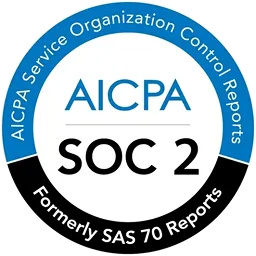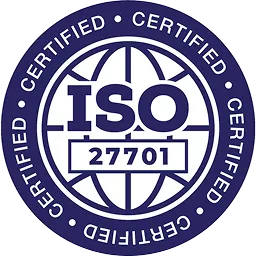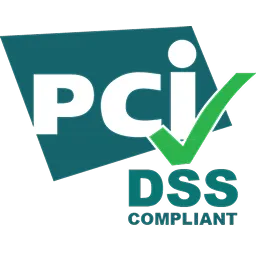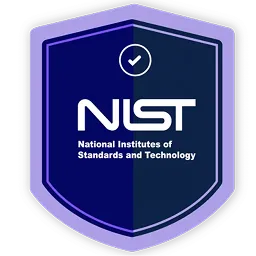Like inconsistent permissions and unchecked access create security vulnerabilities, an unmanaged approach to ISO 27001 audits can expose your organization's information security. Regular audits are essential for identifying weaknesses, demonstrating compliance, and fostering a culture of security.
Cyber threats and data breaches are a constant concern, with cyberattacks occurring once every 39 seconds, with 95% due to human error. Ensuring the security and integrity of information assets is paramount for organizations of all sizes and across industries.
The ISO 27001 standard provides a comprehensive framework for establishing, implementing, maintaining, and continually improving an Information Security Management System (ISMS). This internationally recognized standard outlines best practices and requirements for protecting information assets' confidentiality, integrity, and availability.
But how do you ensure your ISMS is genuinely effective? This blog post will guide you and explain everything you need about ISO 27001 audits, their different types, and their critical role in maintaining a robust information security stance.
What is an ISO 27001 Audit?
An ISO 27001 audit is a systematic review process that evaluates an organization's ISMS to ensure it aligns with the requirements of the ISO/IEC 27001 standard and the organization's information security objectives and policies.
An ISO 27001 audit involves an independent and objective auditor or audit team assessing the following components:
- The ISMS or its elements verify that it meets the standards and the organization's information security needs.
- The implementation and effectiveness of the organization's policies, processes, and controls related to information security.
- The risk assessment and treatment processes ensure that information security risks are identified, assessed, and mitigated to an acceptable level.
Importance of ISO 27001 Audits
ISO 27001 audits play a critical role in maintaining the integrity and effectiveness of an organization's ISMS. They provide valuable insights and assurance that the implemented security measures are adequate, practical, and efficient. Regular audits help organizations:
- Ensure compliance with the ISO 27001 standard and regulatory requirements.
- Identify potential weaknesses and areas for improvement in their information security practices.
- Demonstrate their commitment to information security to stakeholders, customers, and partners.
- Continuously improve their ISMS and reduce information security risks.
Types of ISO 27001 Audits

The ISO 27001 standard requires organizations to conduct two main types of audits:
1. Internal audits
Internal audits are conducted by the organization, either by its own competent and objective auditors or by hiring third-party auditors. These audits are mandatory for ISO 27001 compliance and must be carried out at planned intervals to ensure the ISMS is effectively implemented and maintained.
2. External audits
Accredited third-party certification bodies perform external audits. These audits are necessary for obtaining and maintaining ISO 27001 certification, which provides independent validation of an organization's ISMS and compliance with the standard. External audits include:
- Certification audit: This is the initial audit conducted by the certification body to assess an organization's ISMS and determine if it meets the requirements for ISO 27001 certification.
- Surveillance audits: After obtaining certification, organizations must undergo regular surveillance audits, typically annually or semi-annually, to ensure continued compliance and the effectiveness of their ISMS.
- Recertification audits: These comprehensive audits are conducted every three years to renew an organization's ISO 27001 certification.
Depending on the organization's needs and contractual obligations, interested parties, such as customers or partners, may conduct external audits to gain assurance about the organization's information security practices.
ISO 27001 Internal Audits
Internal audits are a critical component of an organization's ISMS and are mandatory for ISO 27001 compliance. Let us discuss it in detail:
Requirements for Internal Audits
Clause 9.2 of the ISO 27001 standard requires organizations to plan and conduct internal audits at planned intervals to assess the following:
- The ISMS must conform to the requirements of the ISO 27001 standard and the organization's information security policies and objectives.
- Effective implementation and maintenance of the ISMS within the organization.
Objectives of Internal Audits
The primary objectives of internal audits are:
- Ensure the ISMS is adequately implemented and operated according to the organization's requirements and the ISO 27001 standard.
- Verify the effectiveness of the ISMS in reducing information security risks to an acceptable level.
- Identify and report any nonconformities, weaknesses, or areas for improvement in the ISMS.
- Provide input for the management review process and facilitate continuous improvement of the ISMS.
Conducting an Internal Audit
The internal audit process typically involves the following steps:
A. Documentation review: Auditors review the organization's policies, procedures, standards, and guidance documentation related to the ISMS. This step ensures that the documentation is complete, up-to-date, and fit for purpose.
B. Planning and preparation: The audit team develops a detailed audit plan outlining the scope, objectives, timing, and resources required for the audit. During this phase, the auditors also identify key stakeholders, processes, and areas to be audited.
C. Fieldwork: In this phase, auditors gather evidence through interviews, observations, records, and log reviews. They assess whether the documented policies and procedures are followed in practice and whether the implemented controls are adequate.
D. Analysis: Auditors analyze the collected evidence against the requirements of the ISO 27001 standard and the organization's information security objectives. They identify any nonconformities, gaps, or areas for improvement.
E. Reporting: The audit team prepares a detailed report summarizing their findings, including any non-conformities, observations, and recommendations for improvement. This report is presented to the organization's management for review and action.
Roles and Responsibilities in Internal Audits
Successful internal audits require the collaboration and commitment of various roles within the organization:
- Auditors: Auditors are responsible for planning, conducting, and reporting on the internal audit. They must be competent, objective, and independent from the areas they are auditing.
- Auditees: Auditees are the individuals or teams responsible for audited processes, controls, and activities. They must cooperate with the auditors, provide requested information and evidence, and address any nonconformities or issues identified during the audit.
- Top management: Top management plays a crucial role in ensuring the effectiveness of the internal audit process. They must provide the necessary resources, support, and commitment to the ISMS and the internal audit program.
Additionally, top management is responsible for reviewing the audit reports and implementing corrective actions and improvements based on the audit findings.
ISO 27001 External Audits
Accredited third-party certification bodies conduct external audits for obtaining and maintaining ISO 27001 certification. Let us discuss this in detail further:
Certification Process
The certification process for ISO 27001 typically involves the following stages:
- Stage 1 audit (ISMS design review)
In this initial stage, the certification body's auditors review the organization's ISMS documentation to ensure it meets the requirements of the ISO 27001 standard. They assess the organization's readiness for the certification audit and provide feedback on improvement areas.
- Stage 2 audit (Certification audit)
During the Stage 2 audit, the auditors conduct an on-site assessment of the organization's ISMS implementation and effectiveness. They review processes, interview personnel, and collect evidence to verify that the ISMS operates as documented and complies with the ISO 27001 standard. If the organization meets the requirements, the certification body issues the ISO 27001 certificate.
- Surveillance audits
Once certified, an organization must undergo regular annual or semi-annual surveillance audits. These audits are less comprehensive than the certification audit but ensure that the organization's ISMS continues to comply with the standard and is effectively maintained.
- Recertification audits
Organizations must undergo a recertification audit every three years to renew their ISO 27001 certification. This audit is similar in scope to the initial certification audit and involves a comprehensive assessment of the ISMS to verify continued compliance and effectiveness.
Accreditation Bodies and Certification Bodies
- Role of accreditation bodies
Accreditation bodies are independent organizations that assess and accredit certification bodies based on their competence and adherence to international standards and best practices. Examples of accreditation bodies include:
- The ANSI National Accreditation Board (ANAB) in the United States
- The Standards Council of Canada (SCC) in Canada
- The United Kingdom Accreditation Service (UKAS) in the United Kingdom
- Role of certification bodies
Certification bodies are authorized by accreditation bodies to conduct ISO 27001 audits and issue certifications to organizations that meet the standard's requirements. They are responsible for providing competent and objective auditors, following standardized audit procedures, and ensuring the integrity and validity of the certification process.
Audit Timeline and Frequency
The timeline and frequency of ISO 27001 audits vary depending on the stage of the certification process and the requirements of the accreditation body. Generally, the timeline follows this pattern:
1. Preparing for an ISO 27001 Audit
Proper preparation is crucial for a successful ISO 27001 audit, whether internal or external. Adequate planning and readiness can help organizations identify and address potential issues before the audit, ensuring a smoother process and increasing the chances of achieving compliance.
2. Identifying key processes
The first step in preparing for an ISO 27001 audit is identifying the key processes and areas to be assessed. This includes:
- Defining the scope of the ISMS and the information assets to be covered by the certification.
- Conducting a risk assessment to identify threats, vulnerabilities, and potential impacts on the organization's information assets.
- Prioritizing processes based on their criticality, complexity, and impact on the ISMS.
- Engaging with process owners and stakeholders to understand their roles and responsibilities within the ISMS.
By identifying and focusing on key processes, organizations can ensure that their most critical information security controls and practices are thoroughly reviewed and meet the ISO 27001 requirements.
3. Documentation requirements
The ISO 27001 standard requires organizations to maintain various documented information to demonstrate compliance. Auditors will review this documentation during the audit to assess the organization's ISMS.
- Required documents
The standard mandates the following documented information:
- ISMS scope statement (Clause 4.3)
- Information security policy (Clause 5.2)
- Risk assessment and risk treatment methodologies (Clause 6.1.2 & 6.1.3)
- Risk register and treatment plan (Clause 6.1.3 e)
- Statement of Applicability (SoA) (Clause 6.1.3 d)
- Policies and procedures related to the implemented Annex A controls
- Evidence of internal audits and management reviews (Clauses 9.2 and 9.3)
- Records of corrective actions (Clause 10.1)
2. Recommended documents
While not explicitly required by the standard, organizations should also prepare and maintain the following documented information:
- Mobile device policy
- Telework (remote work) policy
- Clear desk and clear screen policy
- Backup routines and schedules
- Evidence of backup restoration testing
- Business continuity and disaster recovery plans and procedures
- Change management policy or procedures
- Information security requirements in supplier agreements
Ensuring all required and relevant documentation is up-to-date, complete, and easily accessible can significantly streamline the audit process and demonstrate the organization's commitment to information security.
Training and Awareness
ISO 27001 strongly emphasizes ensuring that all personnel involved in the ISMS, including employees and relevant contractors, receive appropriate information security education, training, and awareness (Clause 7.2 and Annex A control A.7.2.2).
As part of the audit preparation, organizations should:
- Identify the training needs of different roles and responsibilities within the ISMS.
- Develop and deliver comprehensive training programs covering the organization's information security policies, procedures, and best practices.
- Maintain records of training attendance and completion.
- Ensure that personnel are aware of their roles and responsibilities within the ISMS.
Proper training and awareness can ensure that the ISMS is effectively implemented and maintained throughout the organization, reducing the risk of human error and increasing overall information security preparedness.
Tips for Successful Audits
In addition to the preparation steps mentioned above, organizations can follow these tips to increase their chances of a successful ISO 27001 audit:
- Conduct internal audits and gap analyses: Regular internal and gap analyses can help identify and address potential issues before the external audit, reducing the likelihood of non-conformities.
- Foster top management commitment: Visible support and commitment from top management can demonstrate the organization's dedication to information security and the ISMS.
- Involve key stakeholders: Engage with process owners, department heads, and other stakeholders to ensure they understand their roles and responsibilities within the ISMS.
- Maintain clear and concise documentation: Well-organized and easily accessible documentation can streamline the audit process and demonstrate the organization's systematic approach to information security.
- Allocate sufficient resources: Ensure that adequate time, personnel, and resources are allocated for the audit preparation and execution, as well as for addressing any identified nonconformities or areas for improvement.
- Be transparent and cooperative: Maintain an open and collaborative attitude with the auditors, providing them with all requested information and access to facilitate the audit process.
By following these tips and taking a proactive approach to preparation, organizations can increase their chances of a successful ISO 27001 audit and demonstrate their commitment to information security best practices.
Non-Conformities and Corrective Actions
During an ISO 27001 audit, auditors may identify instances where the organization's ISMS does not meet the requirements specified in the standard. These instances are referred to as nonconformities, and they must be addressed through corrective actions to maintain compliance and continuous improvement.
Types of Non-Conformities
Nonconformities can be classified into two categories:
1. Major non-conformities
Major nonconformities are considered significant deviations from the ISO 27001 standard's requirements. They may include:
- The absence or total breakdown of a required system or process.
- A situation that raises significant doubt about the organization's ability to meet specified requirements.
- A group of minor nonconformities against one requirement, which collectively represents a total breakdown of the system.
2. Minor nonconformities
Minor nonconformities are less severe deviations from the standard's requirements. They typically involve:
- A lapse or minor failure in implementing a system or process without indicating a complete breakdown.
- A situation that does not raise significant doubt about the organization's ability to meet specified requirements.
Addressing Non-Conformities
Addressing nonconformities promptly and effectively is crucial for maintaining the integrity and effectiveness of the ISMS. Organizations should follow these steps:
- Investigate the root cause: Conduct a thorough investigation to identify the nonconformity's underlying cause(s) rather than addressing only the symptoms.
- Develop and implement corrective actions: Based on the root cause analysis, develop and implement corrective actions to address the nonconformity and prevent recurrence.
- Verify the effectiveness of corrective actions: Monitor and assess the effectiveness of the corrective actions taken to ensure that the nonconformity has been resolved and that the ISMS remains compliant.
- Update documentation and communicate changes: Update relevant documentation, such as policies, procedures, and records, to reflect the corrective actions. Communicate these changes to all applicable personnel.
Corrective Action Process
The corrective action process is an integral part of the continuous improvement cycle required by ISO 27001. It involves the following steps:
- Identifying nonconformities: Nonconformities can be identified through various sources, including internal audits, external audits, management reviews, or incident investigations.
- Documenting nonconformities: Nonconformities should be documented, along with their severity (major or minor) and any relevant details or evidence.
- Root cause analysis: Conduct a thorough root cause analysis to identify the underlying reasons for the nonconformity.
- Developing corrective actions: Based on the root cause analysis, develop and document corrective actions to address the nonconformity and prevent its recurrence.
- Implementing corrective actions: Assign responsibilities and timelines for implementation and ensure they are carried out effectively.
- Monitoring and review: Monitor the effectiveness of the corrective actions and review the ISMS to ensure that the nonconformity has been resolved and that the corrective actions have not introduced new issues or risks.
- Continuous improvement: Use the lessons learned from the corrective action process to identify opportunities for improving the ISMS and prevent similar nonconformities from occurring in the future.
By following a structured corrective action process and addressing nonconformities promptly, organizations can maintain the integrity and effectiveness of their ISMS and ensure continuous compliance with the ISO 27001 standard.
Benefits of ISO 27001 Audits

Conducting regular ISO 27001 audits, both internal and external, provides several benefits to organizations, including:
1: Assurance and Compliance
- Independent verification: External audits by accredited certification bodies provide an independent, objective assessment of the organization's ISMS, ensuring that it meets the requirements of the ISO 27001 standard and industry best practices.
- Regulatory and contractual compliance: ISO 27001 certification can help organizations demonstrate compliance with various legal, regulatory, and contractual requirements related to information security, reducing the risk of penalties, fines, or legal disputes.
- Stakeholder confidence: By undergoing rigorous audits and achieving ISO 27001 certification, organizations can instill confidence in their customers, partners, and other stakeholders regarding their ability to protect sensitive information and manage information security risks effectively.
2: Continuous Improvement
- Identification of weaknesses and areas for improvement: Audits can reveal potential gaps, vulnerabilities, or inefficiencies within the organization's ISMS, allowing for timely corrective actions and improvements.
- Ongoing monitoring and review: Regular internal and external audits provide a mechanism for continuous monitoring and review of the ISMS, ensuring that it remains practical and relevant in the face of changing threats, technologies, and business requirements.
- Fostering a culture of security: Audits reinforce the importance of information security within the organization, encouraging a culture of security awareness and promoting the adoption of best practices across all levels.
3: Competitive Advantage
- Differentiator in the market: ISO 27001 certification can differentiate an organization from its competitors, demonstrating a commitment to information security and enhancing its reputation and credibility.
- Meeting customer and partner requirements: Many organizations, particularly in regulated industries or those handling sensitive data, require their suppliers and partners to have an ISO 27001-certified ISMS as a prerequisite for conducting business.
- Facilitating business opportunities: A robust and certified ISMS can open doors to new business opportunities, particularly in industries where information security is critical.
4: Risk Mitigation
- Reducing the risk of data breaches: By implementing and maintaining an effective ISMS based on ISO 27001 requirements, organizations can significantly reduce the risk of data breaches, cyber-attacks, and other security incidents.
- Minimizing financial and reputational losses: Data breaches and security incidents can result in significant economic losses, legal liabilities, and reputational damage. Audits and ISO 27001 compliance help mitigate these risks by ensuring appropriate controls and safeguards are in place.
- Enhancing business continuity and resilience: ISO 27001 strongly emphasizes business continuity management and disaster recovery planning, helping organizations maintain operational resilience and minimize disruptions during security incidents or other adverse events.
Automation & Tools for ISO 27001 Audits
Managing an ISMS and maintaining ISO 27001 compliance can be complex and resource-intensive. That’s because it involves numerous documentation requirements, control assessments, and ongoing monitoring activities. Automation and specialized tools like Zluri can help organizations streamline and enhance the audit process.
Zluri offers an access review solution that can simplify and automate the access review process, a crucial component of ISO 27001 compliance.
- Centralized Access Governance
Managing access control across various systems can be challenging, especially when preparing for an ISO 27001 audit. Zluri’s access review solution offers centralized access governance, allowing you to manage all user access from one platform. This centralized system provides a clear overview of who has access to what, making identifying and addressing discrepancies easier.
For example, imagine your organization uses multiple software applications, each with its own access controls. With Zluri, you can integrate these applications into one dashboard, giving you a unified view. This centralized approach saves time and ensures access policies are consistently applied across all platforms.
- Auto Remediation of Over-Privileged Access
One of the common issues during an ISO 27001 audit is over-privileged access, where users have more permissions than necessary. Zluri’s solution includes auto-remediation features that automatically adjust permissions based on predefined policies.
Also, you can choose the playbooks to revoke or modify over privileged access. This ensures that users only have the access they need to perform their job functions, reducing the risk of unauthorized data access.

For instance, if a marketing employee can access financial records, Zluri can detect this anomaly and automatically revoke unnecessary permissions. This proactive approach enhances security and demonstrates to auditors that your organization has robust access control measures in place.
- Comprehensive User Access Review Reports
Regular access reviews are critical to maintaining ISO 27001 compliance. Zluri simplifies this process by generating detailed user access review reports. These reports provide insights into who has access to what, when access was granted, and whether the access is still required. They are easy to understand and can be readily shared with auditors.

Moreover, during the ISO 27001 audit, this access review report was presented as supporting documents for the audit. This demonstrates your commitment to data security and compliance. Auditors can easily verify that access rights align with established policies and regulations.
If you want to know more about access review, Book a Demo today!
Frequently Asked Questions (FAQs)
1: Who can conduct the ISO 27001 audit?
These audits aim to evaluate the effectiveness of a company's Information Security Management System (ISMS). They should be conducted regularly and thoroughly documented. Organizations can perform these audits using their internal audit team or hire an external auditor if they lack one.
2: Is the ISO 27001 annual audit?
ISO 27001 does not mandate annual certification, but you will need to undergo surveillance audits in the interim years. For the two years following your certification, an auditor from a certification body will conduct a surveillance audit to verify that your organization continues to operate its ISMS and controls as intended.
3: What is the stage 1 audit in ISO 27001?
The Stage 1 audit involves an external ISO 27001 auditor conducting a thorough documentation review. During this process, the auditor examines the organization's policies and procedures to ensure they comply with the ISO standard and effectively support its Information Security Management System (ISMS).






.png)
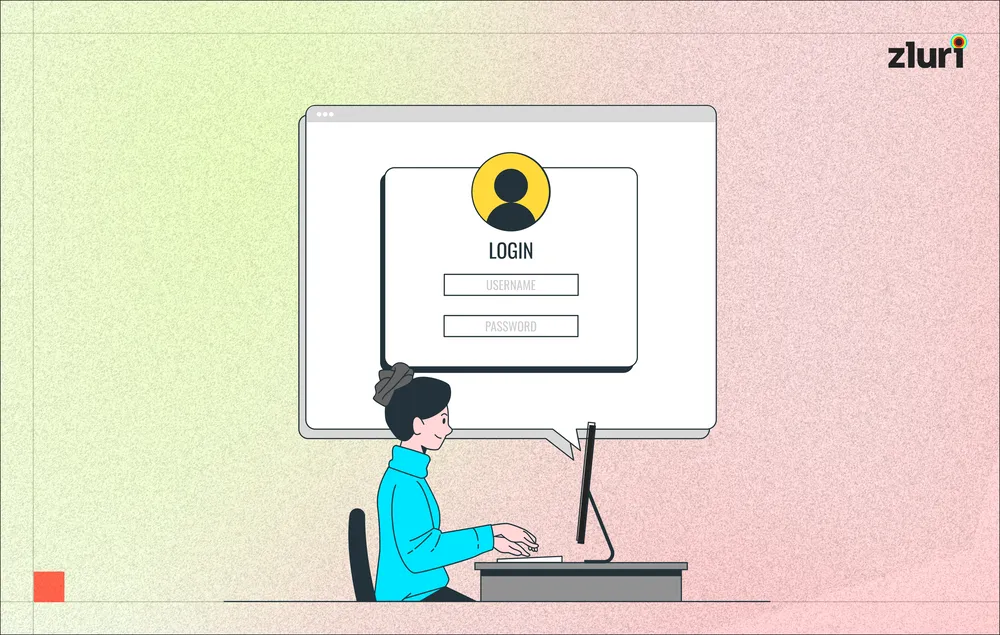

.svg)



